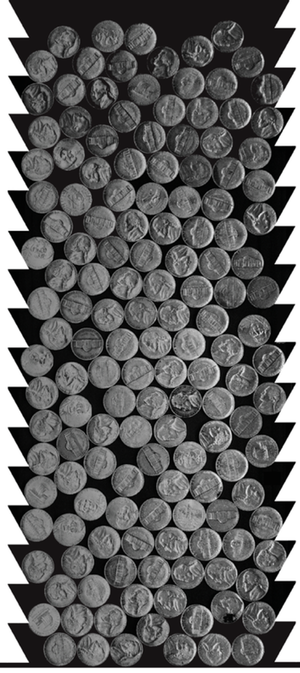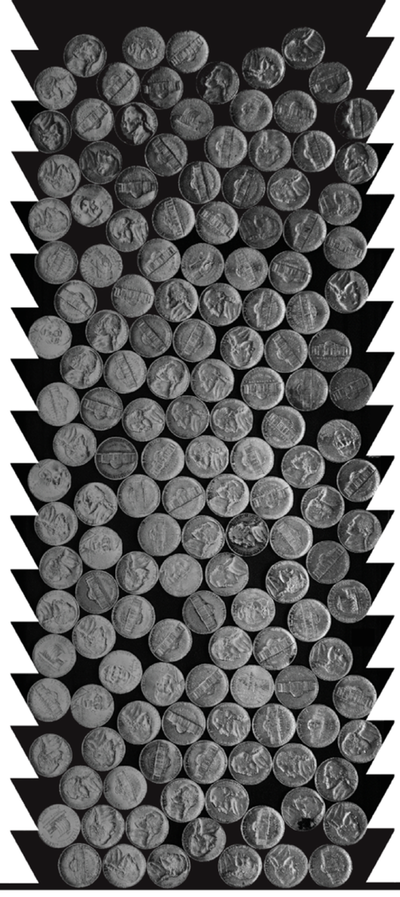Granular Materials Aren’t Like Liquids, Except When They Are
The pressure of grain at the bottom of a tall silo is not as high as for the equivalent column of water because of the way grain can interact with the walls. But in Physical Review Letters, researchers report that, in a two-dimensional system of disks analogous to grain in a silo, the pressure is more like that for a liquid. The results help to clarify the forces involved in handling 2D commercial materials, such as soda cans being processed in a factory, and also suggest a way to recover the lower pressure of a grain silo.
The pressure at the bottom of a cylindrical column of liquid reflects the weight of all of the fluid above it. For grain, however, farmers have long known that as you fill a silo, the pressure stops increasing once the grain is higher than roughly the silo diameter, following an equation published by H. A. Janssen in 1895 [1]. The pressure is limited because the grain kernels throughout the silo jam together to form a series of arches that support the material above and that are themselves supported by friction at the silo walls.
Eric Corwin of the University of Oregon, Eugene, and his student, Yasin Karim, explored a two-dimensional analog of the silo, in which coins on a horizontal surface play the role of grain particles. The gravity force is mimicked by the drag from a conveyor belt that slides continuously under the coins, which are confined by walls on both sides. Similar arrangements occur frequently in pharmaceutical, food, and minerals handling, and the two-dimensional flow has been studied previously. But Karim and Corwin looked at the behavior when there is no flow. At the “bottom” of the side walls (downstream end) they placed a barrier that blocked coin motion and that was outfitted with sensors to measure the total force needed to hold back the coins.
In contradiction to Janssen’s description, the researchers found that the force at the “bottom” of the belt continued to grow as they added nickels at the “top” of the belt, even though there was significant friction with the walls. To explain their results, the team suggests that as the belt slides under the coins, they rapidly alternate between sticking and slipping, which creates a sideways jiggling that neutralizes the friction at the walls. “It only requires tiny motions,” Corwin says.
If a similar effect happened in a factory packing soda cans, Corwin says, it could give rise to “enormous forces” if the line were temporarily blocked and cans began to stack up. But “people know how to handle soda cans pretty well” already, he admits, adding that one challenge in studying granular flow is that “empirical knowledge often leads the abstract knowledge. People know how to do things with granular materials, even if they don’t really know why.”
Karim and Corwin found that one way to recover the effect of friction was to replace the smooth sidewalls with sawtooth structures made with a 3D printer. As long as the “teeth” are big enough that a coin can fit between them, the angled surface enforces a precise relationship between the force along the wall and the force perpendicular to it. Mathematically, this relationship is exactly that for frictional forces, which allowed the researchers to confirm Janssen’s analysis by testing sawtooth structures with different angles.
Although the idea that belt-induced jiggling neutralizes wall friction makes sense, the work raises interesting additional questions, says Sid Nagel of the University of Chicago. “How much of this jiggling do you need in order for this to occur,” and does it happen faster if the jiggling is larger? “One of the things that is embarrassing,” he adds, “is how little we understand about friction.”
–Don Monroe
Don Monroe is a freelance science writer in Murray Hill, New Jersey.
References
- H. A. Janssen, Z. Ver. Dtsch. Ing. 39, 1045 (1895)





